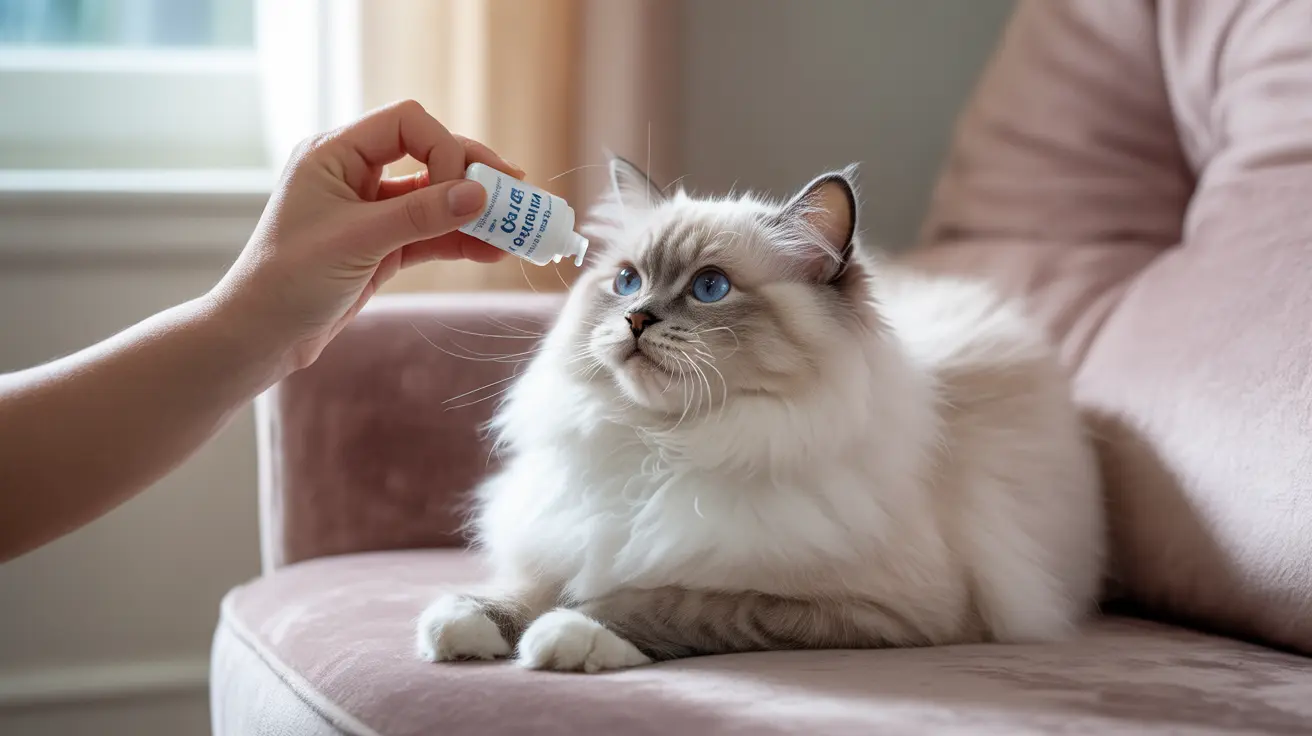Understanding Cat Eye Problems and Their Symptoms
Cats can experience various eye conditions that require different treatments. Common symptoms that indicate your cat needs veterinary attention include:
- Redness or inflammation
- Excessive tearing or discharge
- Squinting or frequent blinking
- Cloudiness in the eye
- Visible third eyelid
- Pawing at the eye
- Swelling around the eye area
Why Human Eye Drops Are Dangerous for Cats
Human eye drops can be extremely hazardous for cats for several reasons. Many contain ingredients like tetrahydrozoline, which can cause severe reactions if absorbed or ingested during grooming. Even small amounts can lead to serious complications including:
- Severe allergic reactions
- Cardiovascular problems
- Breathing difficulties
- Dramatic blood pressure changes
- Potential fatal outcomes
Safe Eye Drop Options for Cats
Veterinary-prescribed eye drops are specifically formulated for feline eye care. These may include:
- Antibiotic drops for bacterial infections
- Antiviral medications for herpes virus infections
- Lubricating drops for dry eyes
- Anti-inflammatory drops for allergic reactions
- Specialized cleaning solutions
Proper Administration of Cat Eye Drops
Administering eye drops to cats requires patience and proper technique:
- Wash your hands thoroughly
- Gently clean around the eye area
- Position your cat comfortably
- Hold the eye open carefully
- Apply drops without touching the eye
- Reward your cat after treatment
When to Seek Veterinary Care
Immediate veterinary attention is necessary when you notice:
- Sudden changes in eye appearance
- Signs of pain or distress
- Colored or thick discharge
- Loss of vision or changes in behavior
- Eye trauma or injury
Prevention and Monitoring
Maintaining your cat's eye health involves regular monitoring and preventive care:
- Schedule regular veterinary check-ups
- Keep the face and eye area clean
- Monitor for early signs of problems
- Maintain a clean living environment
- Avoid exposure to irritants
Frequently Asked Questions
Why are human eye drops unsafe or toxic for cats?
Human eye drops contain ingredients like tetrahydrozoline and preservatives that can be toxic to cats. These substances can cause severe reactions, including breathing difficulties, cardiovascular problems, and potentially fatal complications.
What are the common symptoms of eye problems in cats that require veterinary attention?
Key symptoms include redness, swelling, discharge (clear, yellow, or green), excessive blinking, squinting, visible third eyelid, and pawing at the eyes. Any of these symptoms warrant immediate veterinary evaluation.
Which types of eye drops are safe and recommended for cats by veterinarians?
Only veterinary-prescribed eye drops specifically formulated for cats are safe. These may include antibiotic drops, antiviral medications, lubricating drops, or anti-inflammatory medications, depending on the specific condition.
How should I properly apply eye drops to my cat's eyes to avoid harm or contamination?
Always wash your hands first, gently clean the eye area, avoid touching the eye with the dropper, and maintain proper restraint of your cat. Follow your veterinarian's specific instructions for application technique and frequency.
Can I use artificial tears or saline solution from the human pharmacy on my cat's eyes safely?
No, you should not use human artificial tears or saline solution unless specifically directed by your veterinarian. Even seemingly harmless human eye products can contain preservatives or ingredients that may harm your cat's eyes.
Conclusion
When it comes to eye drops for cats, always prioritize veterinary-prescribed treatments over human medications. Quick action and proper medical care are essential for maintaining your cat's eye health and preventing serious complications. Remember that each cat's needs are unique, and only a qualified veterinarian can determine the appropriate treatment for your pet's specific condition.






